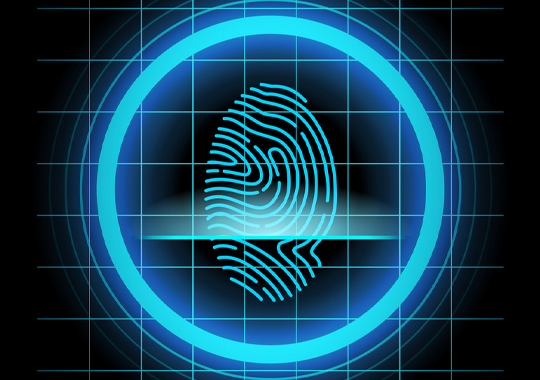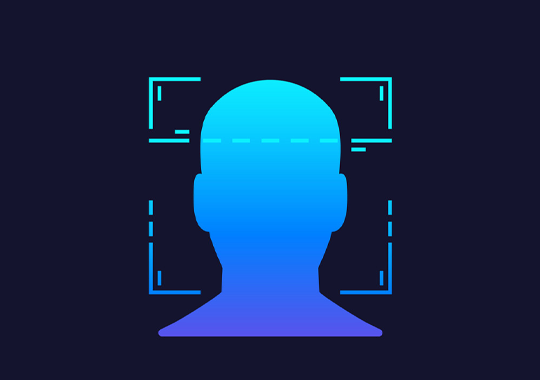Fingerprint Recognition Technology
Fingerprint recognition is the most effective and largely utilized method of biometrics used to identify and verify the identity of an individual. This is because fingerprints are one of those inexplicable twists of nature that all human beings happen to naturally have built-in, literally at their fingertips. All humans have tiny ridges and valleys of skin on their fingertips, formed through a combination of genetic and environmental factors, building unique fingerprints for each human being. Even identical twins have unique fingerprints. Such unique biometric trait set the platform to build fingerprint recognition systems.
Fingerprint recognition or fingerprint authentication is an automated method of verifying a match between fingerprints, by comparing a live fingerprint with previously stored database of fingerprints.
Fingerprint sensor is the most important module in a biometric fingerprint recognition system. A fingerprint sensor is an electronic module or device used to capture a digital image of the fingerprint outline. The captured image is termed as live scan. This live scan is digitally processed to create and store a biometric template and which is later used for fingerprint matching or identification purposes. Listed below is a synopsis of few of the more universally used fingerprint sensor technologies.
Capacitance or Capacitive Fingerprint Sensors
Capacitance sensors use principles of capacitance to form fingerprint images. In this method of imaging, the sensor array’s pixels, each, act as one plate of a parallel-plate capacitor, the electrically conductive dermal layer acts as the other plate, and the non-conductive epidermal layer acts as a dielectric.
Optical Fingerprint Sensors
Optical fingerprint sensor technique is most commonly used fingerprint sensor technology. Optical fingerprint imaging captures a digital image of the finger print using visible light. This type of sensor is, in essence, a specialized digital camera. The top layer of the sensor, where the finger is placed, is known as the touch surface. Beneath this layer is a light-emitting phosphor layer which illuminates the surface of the finger. The light reflected from the finger passes through the phosphor layer to an array of solid state pixels, a charge-coupled device, which captures a visual image of the fingerprint. Most advanced versions of optical sensors use sophisticated methods to identify live fingerprints. This technology is termed as optic sensor over semiconductor film, OSSF fingerprint sensors that use advanced semiconductor films that are capable of analyzing live finger prints utilizing electro-static science technique that a live & healthy human being leaves as a signature.
Ultrasonic Fingerprint Sensors
Ultrasonic sensors utilize of the doctrines of medical ultrasonography in order to create visual images of the fingerprint. Unlike optical imaging, ultrasonic sensors use very high frequency sound waves to penetrate the epidermal layer of skin. The sound waves generated using piezoelectric transducers & reflected energy is then measured using piezoelectric materials. Since the dermal skin layer exhibits the same characteristic pattern of the fingerprint, the reflected wave measurements can be used to form an image of the fingerprint. This technology is expensive to implement, however, eliminates the need for clean, undamaged epidermal skin at the fingerprints.
Passive Capacitance Fingerprint Sensors
A passive capacitance sensor use similar principle of capacitance to form an image of the fingerprint patterns on the dermal layer of skin. Each sensor pixel is used to measure the capacitance at that point of the array. The capacitance varies between the ridges and valleys of the fingerprint due to the fact that the volume between the dermal layer and sensing element in valleys always contain an air gap. The dielectric constant of the epidermis and the area of the sensing element are known values. The measured capacitance values are then used to distinguish between fingerprint ridges and valleys forming the fingerprints.
Active Capacitance Fingerprint Sensors
Active capacitance sensors use a charging cycle to apply a voltage to the skin before measurement takes place. The application of voltage charges the effective capacitor. The electric field between the finger and sensor follows the pattern of the ridges in the dermal skin layer. On the discharge cycle, the voltage across the dermal layer and sensing element is compared against a reference voltage in order to calculate the capacitance. The distance values are then calculated mathematically, and in turn used to form an image of the fingerprint. Active capacitance sensors measure the ridge patterns of the dermal layer in a technique similar to the ultrasonic system. Again, this is an expensive technique to implement, however, eliminates the need for clean, undamaged epidermal skin at the fingerprints.
Fingerprint Sensor Algorithms
Matching algorithms are used to compare previously stored templates of fingerprints with live fingerprints for user authentication purposes. In order to do this either the original image must be directly compared with the user’s fingerprint image or certain features of the finger print must be compared.
Pattern-based (or image-based) Finger Recognition Algorithms
Pattern based algorithms compare the basic fingerprint patterns (arch, whorl, and loop) between a previously stored template and a candidate fingerprint. This requires that the images can be aligned in the same orientation. To do this, the algorithm finds a central point in the fingerprint image and centers on that. In a pattern-based algorithm, the template contains the type, size, and orientation of patterns within the aligned fingerprint image. The candidate fingerprint image is graphically compared with the template to determine the degree to which they match.
Benefits of fingerprint identification technology in automation systems include:
- A fingerprint cannot be guessed like guessing a password
- Fingerprints are much harder to fake than identity cards
- Fingerprints cannot be misplaced like misplacing an access card
- Fingerprints cannot be forgotten like forgetting a password
- Comparatively small space is required to store a biometric template
- More history, research, and design has been done for fingerprint identification methods
- Relatively inexpensive with high levels of accuracy
Effective usage of fingerprint identification technology: Fingerprint identification is widely accepted in, Law Enforcement Forensics, Civil Identification, Background Checking, Employment, Adoption/Foster Parenting, Border Control/Visa Issuance, work force management, Physical Access Control, Logical/Network Access Control, Identity Verification for International Travel Documents (passports, visas), Device Access Control (e.g., PDAs, mobile devices), Identity Theft Protection, Payments Authorization etc.



